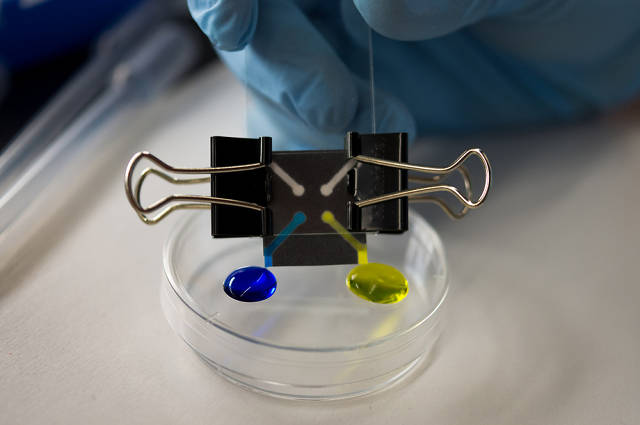
Researchers at the University of Texas at Austin have developed what they think could be an alternative to traditional lab tests for malaria and HIV: an origami-inspired paper sensor. The sensor costs less than 10 cents to produce.
Paper sensors aren’t exactly new--they’re commonly used in home pregnancy tests. But pregnancy tests use one-dimensional paper sensors, while the folded 3-D sensors developed by the UT researchers can test for more results in a smaller area, giving them the ability to do more complicated testing.
The sensor consists of a hydrophobic material (like wax) laid into "canyons" on chromatography paper. These canyons direct the sample (i.e. urine or blood) to specific places on the paper where test reagents are located.
“Biomarkers for all kinds of diseases already exist,” says Richard Crooks, one of the researchers involved in the project, in a statement. “Basically you spot-test reagents for these markers on these paper fluidics. They’re entrapped there. Then you introduce your sample. At the end, you unfold this piece of paper, and if it’s one color, you’ve got a problem, and if not, then you’re probably okay.”
The UT sensor can be printed out using photolithography or just a simple office printer. Once it’s printed, folding it takes under a minute.
No word on whether the sensor will be commercialized in the near future, but if it is, the device could work well with cell phone-based programs that gather malaria data in real time. If a sensor detects that an individual had malaria, for example, an aid worker could quickly upload that information to the cloud. When enough people report cases, an outbreak warning can be dispatched to health workers via text message. The technology could be used even using traditional lab tests, but a 10-cent sensor makes tracking outbreaks a whole lot easier.
No comments:
Post a Comment